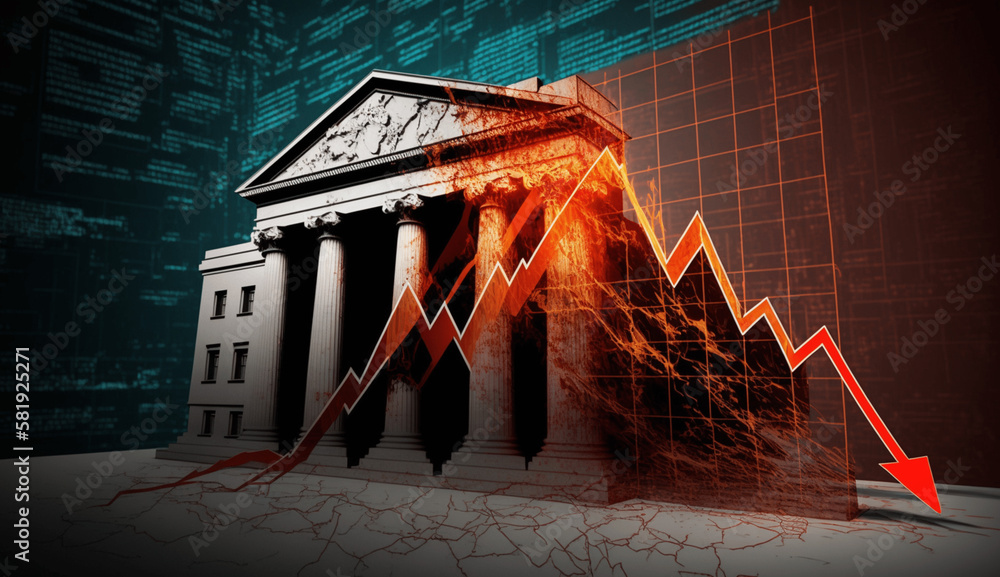Strategies to Safeguard Investments Amid AI Market Volatility
Paul Dietrich warns of an AI-driven bubble and suggests utilities and gold as defensive investments against potential market corrections.

Riding Out an AI Market Crash: Insights from Top Strategist Paul Dietrich
As artificial intelligence (AI) continues to reshape industries and fuel a speculative tech boom, concerns about an impending market correction are growing among experts. Paul Dietrich, chief strategist at Wedbush Securities, has become a notable voice warning investors about the risks of an AI-driven bubble and has shared two key investment strategies to mitigate potential losses in the event of a crash.
The AI Boom and Bubble Concerns
The AI sector has experienced explosive growth in 2025, driven by advances in AI models, massive investments in data centers, and soaring valuations of tech giants like Nvidia, Microsoft, and OpenAI partners. However, this surge has raised alarms reminiscent of the late 1990s dot-com bubble, where enthusiasm outpaced sustainable profitability. Dietrich points out that many retail investors are engaging in leveraged bets on technology stocks, increasing vulnerability to sharp market declines if investor sentiment shifts.
He cautions, “People just think there is no limit on these things, but there always is,” referencing how blue-chip stocks like Microsoft plummeted during the dot-com bust, with shares falling over 60% in 2000. The current market environment is also characterized by extensive government stimulus and low interest rates, which have postponed but not eliminated the risk of recession and market downturn, according to Dietrich.
Two Investments to Ride Out an AI Crash
In this context, Dietrich recommends two types of investments as defensive plays to withstand an AI market correction:
-
Utilities Sector
Dietrich envisions the sprawling data centers supporting AI as evolving into a "commodity business," where infrastructure providers resemble utilities more than high-growth tech firms. These data centers demand substantial energy and water resources, making utility companies—especially those with flexible energy sources and regulatory protection—attractive long-term investments. Utilities are likely to benefit from steady demand and regulated returns, offering stability amid market volatility. -
Gold
Gold has traditionally served as a safe haven during periods of economic uncertainty and market turmoil. With the current speculative fervor around AI, investors are increasingly turning to gold to preserve wealth. The commodity is reportedly surging towards $4,000–$4,200 per ounce as a hedge against a potential crash in tech stocks. Dietrich and other strategists highlight gold's role in diversifying portfolios and reducing exposure to highly leveraged tech assets.
Broader Market Implications
The AI boom’s parallels with past speculative bubbles are drawing attention from investors and regulators alike. The rapid inflow of capital into a narrow segment of stocks, combined with retail investors’ heavy use of leverage, could exacerbate market swings. Wedbush’s Dietrich warns that "We've never, ever seen a big market downturn with the kind of leverage that I see underlying the stock buying," signaling heightened risk if a correction occurs.
Meanwhile, the infrastructure supporting AI, including data centers and cloud computing firms, faces challenges of commoditization and cost pressures, suggesting that only the most efficient and regulated players may thrive long term. This dynamic reinforces the appeal of utilities as a proxy for AI infrastructure investment.
Navigating the AI Market Landscape
Investors seeking to navigate the current AI-driven market phase should consider:
- Avoiding excessive leverage: High-risk bets on AI and tech stocks can amplify losses in downturns.
- Diversifying into stable sectors: Utilities offer regulated income streams and resilience against tech volatility.
- Holding safe-haven assets: Gold provides protection against market shocks and economic disruptions.
- Monitoring macroeconomic factors: Government stimulus and interest rate policies continue to influence market dynamics.
Visuals to Accompany the Topic
- Paul Dietrich’s photo or Wedbush Securities logo to personalize the strategist’s viewpoint.
- Charts illustrating the AI tech stock rally and recent gold price trends highlighting the contrast.
- Images of data centers or utility infrastructure to visually represent the recommended investment themes.
- Infographics showing retail investor leverage statistics to underline market risks.
In summary, Paul Dietrich’s analysis underscores that while AI remains transformative, investors need to temper enthusiasm with caution. Utilities and gold stand out as pragmatic investments to hedge against an AI market correction, providing stability amid the speculative frenzy. This approach echoes lessons from past bubbles, emphasizing the importance of balance and risk management in today’s rapidly evolving tech landscape.


